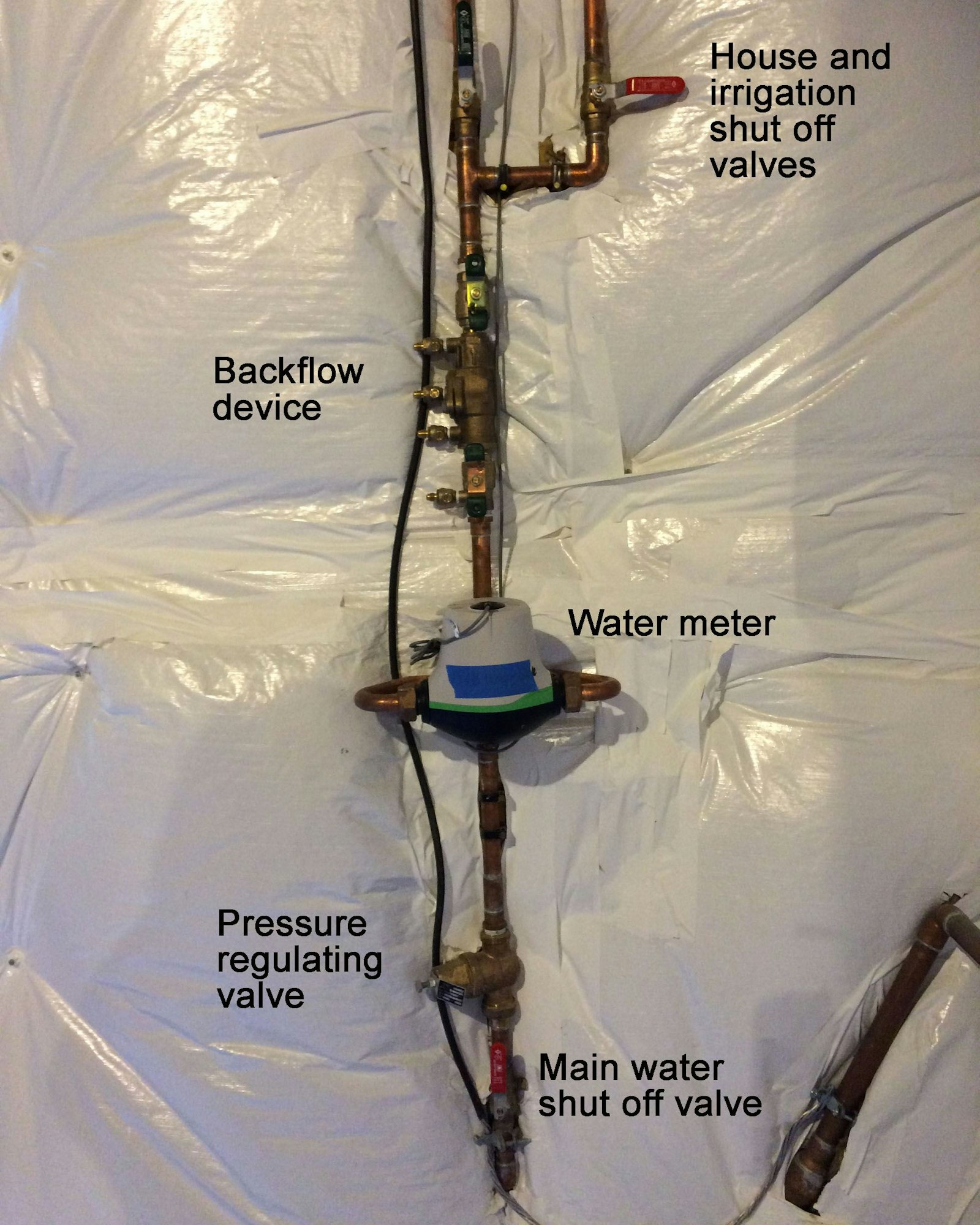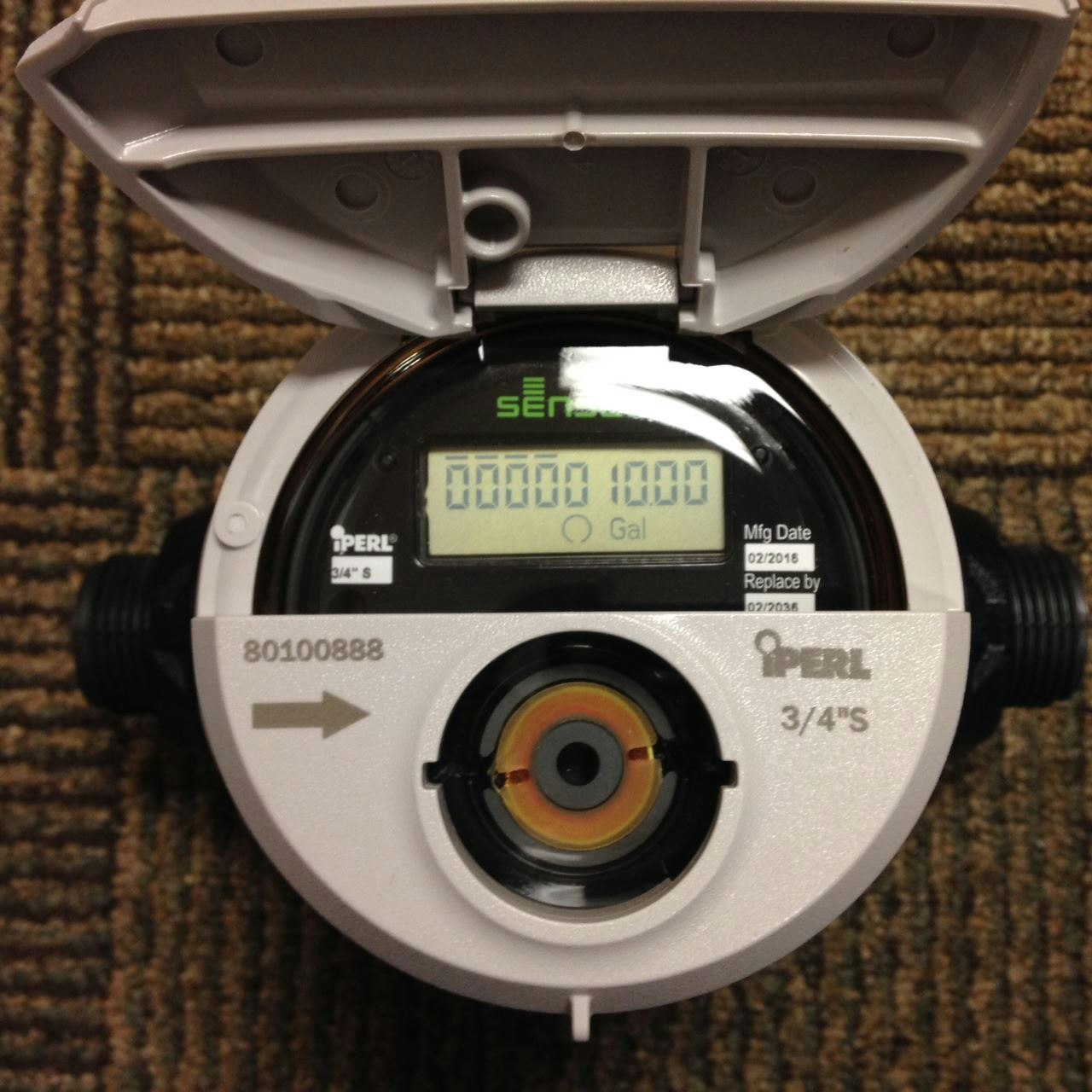Checking For Leaks
**A special thanks to the Town of Castle Rock for putting together this information and making these great videos!
Checking for Leaks
Household leaks account for as much as 1 trillion gallons of water wasted annually in the United States. A leak, in an average household, can add up to more than 10,000 gallons of water wasted in a single year. That is more than 90 gallons of water a day! The most common causes of leaks found in the home are worn toilet flappers and broken irrigation equipment. Most leaks are easy to fix.
Whether a leaky gasket or a hole in a pipe, small leaks can add up:
- Ten drips per minute = 500 gallons per year
- One drip per second = 3,000 gallons per year
- 1/16 inch (1.6 mm) = 822 gallons a day
Use your meter to check for leaks
The water meter is usually located in the basement or crawlspace on the wall facing the street. For some homes, the water meter will be located outside in a meter pit. If your meter is in a pit, do not access your meter. Please call us to schedule a leak detection service call. Be aware the water meter, though located within your property, belongs to Caslte Pines North Metro District

Detecting water flow
Meters with a traditional analog dial, will have a flow indicator on the face. It will be either a black triangle or red dial. Turn off all the water inside and outside, ensuring appliances are not in use. Look at the flow indicator. If the flow indicator is spinning, water is passing through the meter. For the digital meters, look at the display. If the numbers are changing / increasing, then there is water passing through the meter. If you are not using water and the dials / display are moving, there may be a leak.
Locating a leak
First, you will need to determine if the leak is inside your home or the sprinkler system. At the meter tree, find the valve that supplies water to your sprinkler system and close it. Look at the meter, has the flow indicator stopped moving? If so, you have isolated the leak to your sprinkler system. If not, then the leak is inside. (Picture shows the irrigation valve turned off - perpendicular to the supply line.)
If the leak is inside the home, you can conduct a similar test by turning off the water valve at each faucet or appliance and observing if there is movement in the water meter. Common types of leaks found in the home include worn toilet flappers, dripping faucets and leaking valves. Most are easily corrected by visiting your local home improvement center.
In some cases, your meter may indicate flow, but it is not a leak. These could include an in-home humidifier, swamp cooler, ice maker or similar appliance.






Checking for a leaky toilet
Toilets account for most indoor leaks. An undetected toilet leak could waste as much as 5 gallons of water per minute. The most common toilet leak is caused by a deteriorated flush valve (flapper) at the bottom of the toilet tank. If the flapper does not seat properly, water will leak into the toilet bowl. Often, this leak will occur without being heard. A new toilet flapper is inexpensive and can be purchased at any home improvement center with easy-to-install instructions. Flappers deteriorate over time and are worsened by in-tank cleaning products.
Detecting larger toilet flapper leaks
- Remove the lid from the tank.
- Flush the toilet.
- Wait until the tank and bowl have refilled completely.
- If the water does not stop flowing to fill the tank, you have a leak. The flush valve and flapper will need to be replaced.
Detecting smaller toilet leaks
- Remove the lid from the tank.
- Add one toilet leak detection dye tablet (available at Castle Rock Water) to the tank. A few drops of food coloring can be used in place of the dye tablet.
- Wait several minutes (approximately 15) for the tablet to dissolve or the food coloring to completely disperse throughout the tank.
- Do not flush. Observe if any of the colored water from the tank finds its way into the bowl.
- If the water in the bowl becomes colored, the flush valve and flapper are not sealing properly and need to be replaced.
- Clean your toilet promptly to prevent staining, especially if using food coloring.
*Information provided on this page was created by our friends at The Town of Castle Rock!
